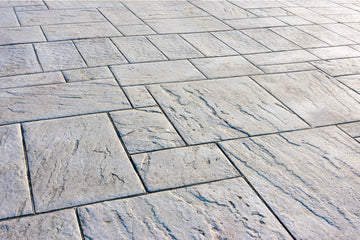The Secret Language of Stones: How Ancient Rocks Tell Tomorrow's Stories

Imagine walking through a grand cathedral, running your fingers along walls that have witnessed centuries of human history. Every grain of limestone, every streak of marble, every crystalline formation in granite holds secrets older than civilization itself. What if we told you that the stones beneath your feet and around your home are actually time travelers, carrying messages from millions of years ago while shaping the future of sustainable architecture?
The Limestone Chronicles: Earth's Ancient Memory Bank
Deep beneath the earth's surface lies one of nature's most fascinating storytellers – limestone. Born from the compressed remains of ancient marine life, each piece of limestone is essentially a fossil library. When you touch a limestone wall, you're literally connecting with creatures that swam in prehistoric oceans over 400 million years ago.
But here's where it gets truly remarkable: scientists have discovered that limestone doesn't just preserve the past – it actively shapes our climate future. These ancient rocks act as massive carbon sinks, slowly absorbing CO2 from the atmosphere over millennia. In a world grappling with climate change, limestone buildings aren't just architectural choices; they're environmental statements written in stone.
The Sandstone Riddle: Desert Dunes Frozen in Time
Picture the Sahara Desert during a fierce sandstorm. Now imagine that storm suddenly frozen, each grain of sand locked in place for eternity. That's essentially what sandstone is – ancient deserts and beaches preserved in rock form. The beautiful patterns you see in sandstone aren't random; they're the fossilized footprints of wind and water from ages past.
Archaeological evidence suggests that ancient civilizations understood something we're only rediscovering today: sandstone's natural ability to regulate temperature and humidity. The great palaces of Rajasthan weren't just built with sandstone for its beauty – they were early examples of passive climate control, keeping interiors cool during scorching summers and warm during desert nights.
Granite's Cosmic Connection: Star Stuff Beneath Our Feet
Every piece of granite tells a story that begins not on Earth, but in the fiery hearts of dying stars. The quartz, feldspar, and mica that compose granite were forged in stellar furnaces billions of years ago, eventually finding their way to our planet through cosmic processes that boggle the imagination.
But granite's cosmic origins aren't just poetic – they're practical. This stellar heritage gives granite its incredible durability and unique energy properties. Some cultures believe granite can enhance mental clarity and emotional stability, while modern science confirms its natural resistance to scratches, heat, and bacteria makes it ideal for both countertops and meditation spaces.
The Porcelain Revolution: When Clay Meets Fire
While natural stones tell ancient stories, porcelain represents humanity's attempt to improve upon nature itself. Born from the marriage of clay and fire at temperatures exceeding 1200°C, porcelain is essentially manufactured stone – a testament to human ingenuity dating back to ancient China.
The modern porcelain revolution has created materials that combine the beauty of natural stone with enhanced properties: complete water resistance, consistent coloring, and the ability to mimic any texture imaginable. It's not replacing natural stone; it's joining the conversation between past and future.
The Psychology of Stone: Why Rocks Heal Our Souls
Recent studies in environmental psychology reveal something our ancestors knew intuitively: natural stone environments significantly reduce stress hormones and improve mental well-being. The phenomenon, called "biophilic design," suggests that humans have an innate connection to natural materials that synthetic alternatives simply cannot replicate.
Hospitals incorporating natural stone elements report faster patient recovery times. Offices with stone features show increased productivity and job satisfaction. Schools built with natural stone demonstrate improved student concentration and academic performance. The stones aren't just decorative – they're therapeutic.
The Sustainable Stone Revolution: Ancient Materials for Future Challenges
As the world grapples with environmental challenges, natural stone emerges as an unexpected hero in the sustainability narrative. Unlike synthetic materials that require energy-intensive manufacturing processes, natural stone is essentially pre-made by geological forces over millions of years.
Consider the lifecycle: a limestone building constructed today will likely outlast several generations of synthetic alternatives, reducing replacement waste and embodied energy consumption over decades. When it finally reaches end-of-life, stone doesn't create toxic landfill waste – it simply returns to the earth from whence it came.
Reading the Future in Stone Patterns
Advanced technology now allows us to read stones like never before. Spectral analysis can determine a stone's exact mineral composition, predicting its performance in specific environments. 3D scanning creates digital twins of quarries, optimizing extraction while minimizing environmental impact. AI algorithms can even predict which stone formations will develop the most sought-after patterns.
This marriage of ancient materials and cutting-edge technology is reshaping architecture, landscaping, and interior design. Designers can now specify stones with scientific precision, ensuring optimal performance while achieving aesthetic visions that seemed impossible just decades ago.
The Artisan's Touch: Where Technology Meets Tradition
Despite technological advances, the human element remains irreplaceable in stone selection and application. Master stoneworkers can feel variations in texture that machines miss, spot patterns that algorithms overlook, and understand applications that databases cannot quantify.
The finest stone applications still require the trained eye of experienced professionals who understand not just the technical properties of stone, but its emotional and aesthetic impact. They're the translators between stone's ancient language and contemporary human needs.
Stone Stories in Modern Spaces
Today's most innovative architects and designers aren't just using stone – they're composing symphonies with it. Kitchens become galleries where limestone backsplashes display nature's artistry. Bathrooms transform into spa-like sanctuaries where granite vanities anchor spaces in timeless elegance. Gardens evolve into outdoor living rooms where carefully selected stones create pathways that guide both footsteps and emotions.
The trend toward authentic, natural materials in interior design isn't just aesthetic – it's psychological. In our increasingly digital world, natural stone provides a tactile connection to something real, permanent, and genuine.
The Future Written in Stone
As we stand on the threshold of an uncertain environmental future, natural stone offers both lessons from the past and hope for tomorrow. These materials that have witnessed the rise and fall of civilizations, that have absorbed the breath of ancient seas and felt the touch of prehistoric winds, now stand ready to shelter and inspire future generations.
The stones are still speaking. The question is: are we listening?







